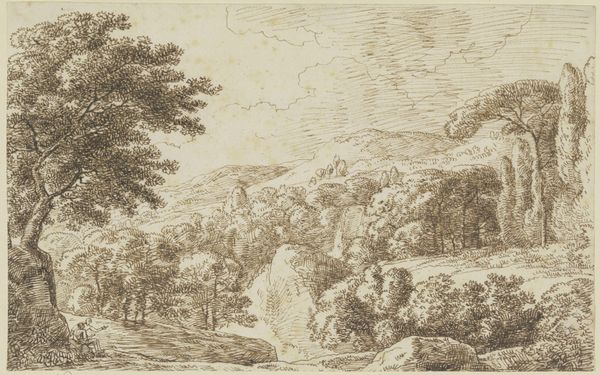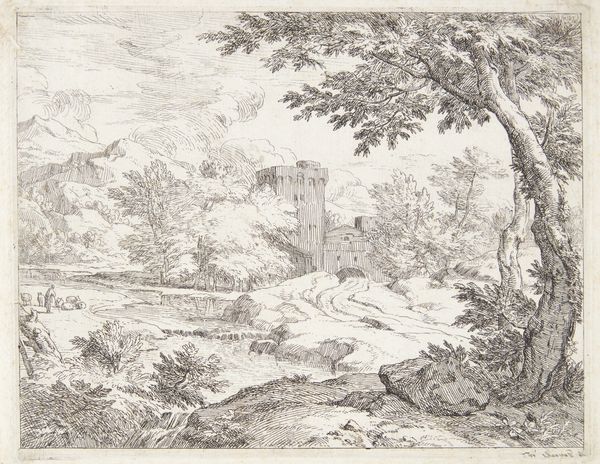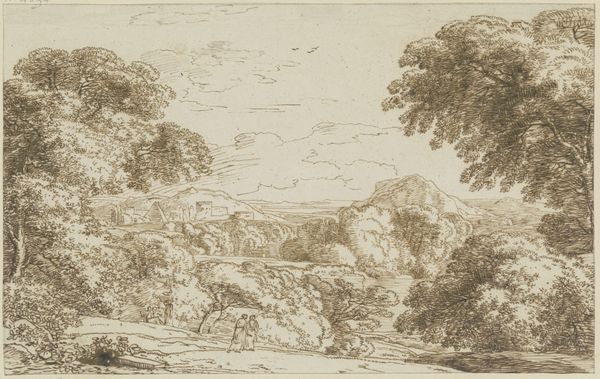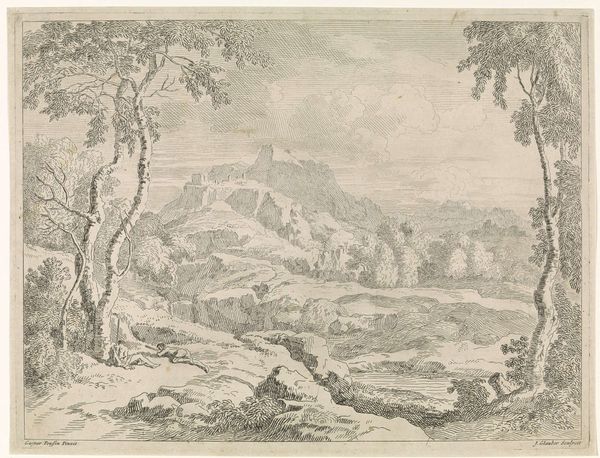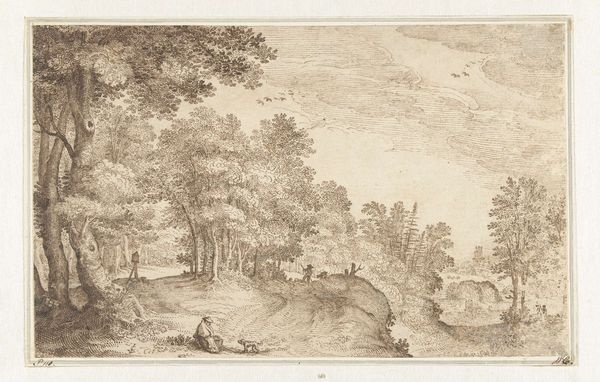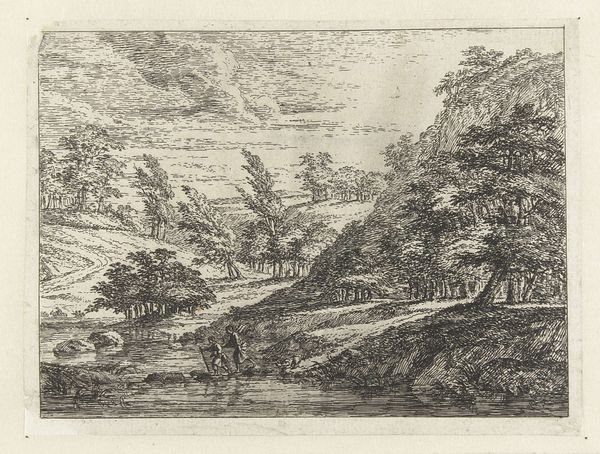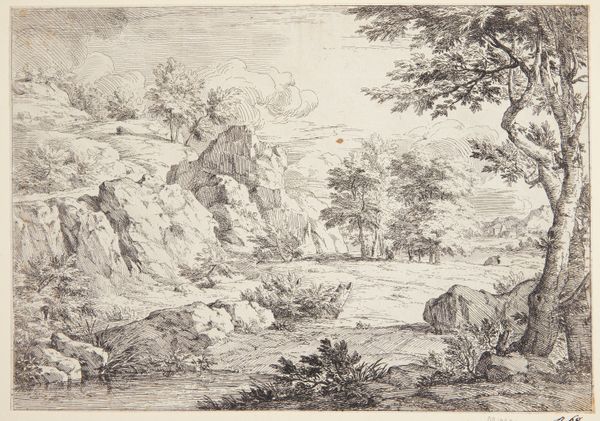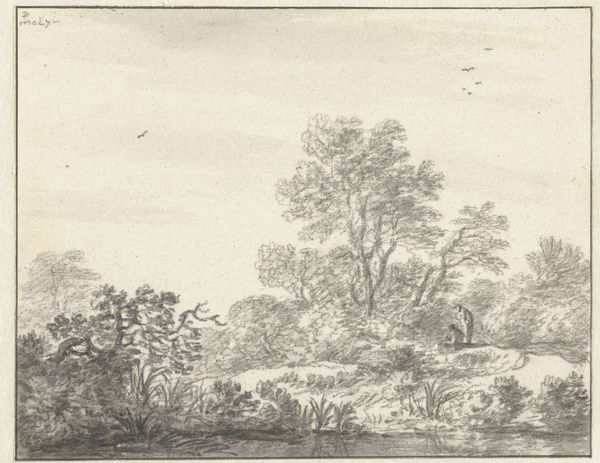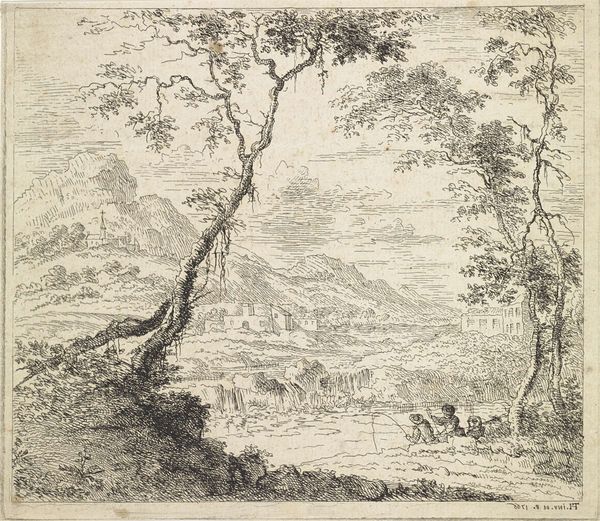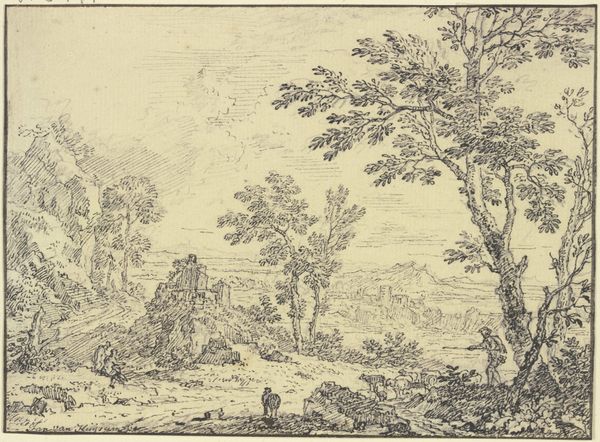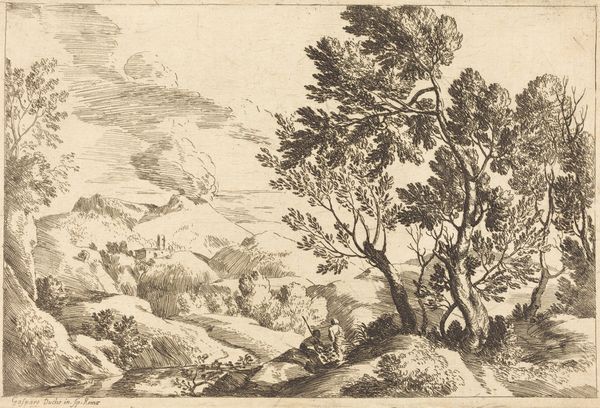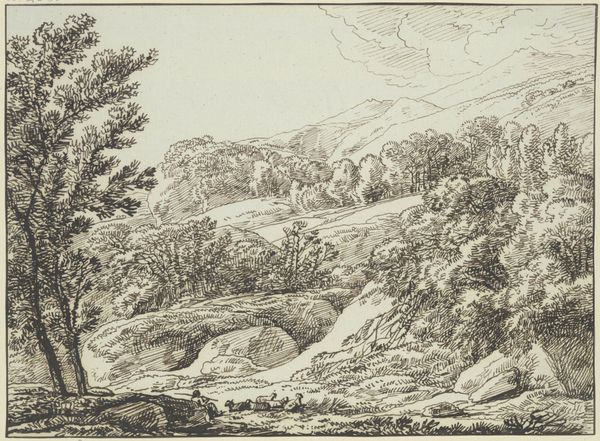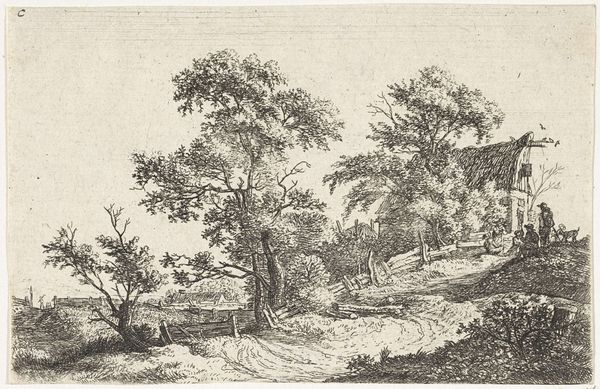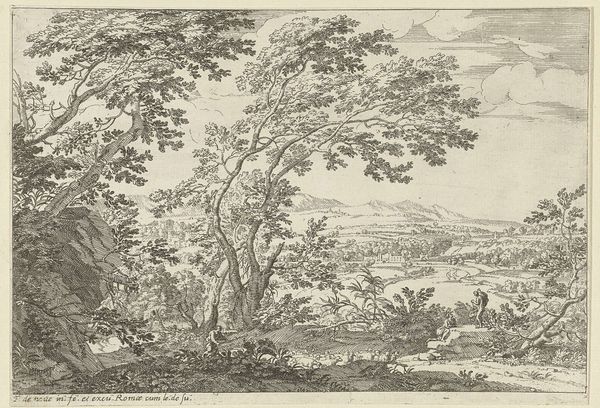
drawing, print, etching, intaglio
#
drawing
#
baroque
# print
#
etching
#
intaglio
#
landscape
#
etching
Dimensions: height 144 mm, width 194 mm
Copyright: Rijks Museum: Open Domain
Editor: This etching, "Bergachtig landschap" by Jan Gabrielsz. Sonjé, created sometime between 1635 and 1707, feels so delicate. All those fine lines making up a vast landscape… I'm curious, what can you tell me about this piece from your perspective? Curator: This landscape, executed with intaglio and etching techniques, reveals much about the Baroque period's artistic labor and social context. Notice the level of detail achievable through the printmaking process: how readily could such images be circulated compared to paintings? What do you think about how it would impact the valuation of labor and of the artwork itself? Editor: I guess producing multiples would reduce the value, making art more accessible. Is that what happened? Curator: Potentially. It brings up fascinating questions about who controlled the means of artistic production and consumption. Consider the socio-economic status of those who might have purchased these prints. What materials were used? How readily available and affordable were these etching tools, inks, and papers at the time, and for whom? Editor: That's interesting. I hadn't thought about the material reality behind a seemingly straightforward landscape. It makes me appreciate the level of craft and also consider how access to that craft was limited. Curator: Precisely. Understanding the materials, process, and potential distribution challenges traditional notions of the artwork as purely aesthetic. It was embedded in specific social relations of production and consumption. Editor: I see. By focusing on the materials and production, it makes you realize the landscape isn’t just a pretty scene, but a product of its time, reflecting class and access. Curator: Exactly. And perhaps, the very act of depicting the landscape through print served a purpose within those societal structures, be it documentation, idealization, or something else entirely. It opens the door to a broader understanding.
Comments
No comments
Be the first to comment and join the conversation on the ultimate creative platform.
